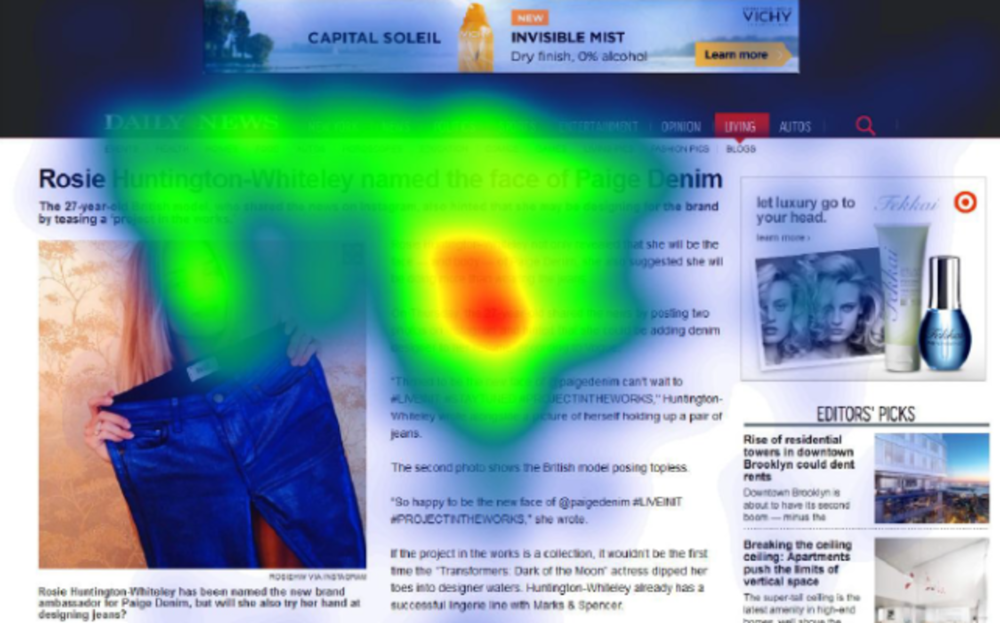Banner ads have built up a bad rap as marketing online gets more data-driven and targeted. According to DoubleClick, the average click-through rate on display ads is 0.1%. The Direct Marketing Association’s Statistical Fact Book charts the response rate of display ads at 0.00—too far to the right of the decimal point to matter. Ad tech company Solve Media claims that you’re more likely to complete Navy SEAL training or summit Mount Everest than click on a banner ad.
But Khoi Truong, L’Oréal Canada’s director of media and data optimization, wanted to find out the truth for himself. He and agency Oboxmedia undertook an eye-tracking study of a campaign for Vichy Capital Soleil sun care products, following the path of 300 pairs of consumer eyeballs across New York Daily News website pages. His biggest finding should surprise no one: Consumers go straight to content.
“What we were looking to do what to find an innovative way to do digital display ads. Usually click-through is less than 1%. Actually the average for the company is around 0.2%,” Truong said. “Content is what we see first.”
Truong was surprised, however, by a few other stats the eye tracking turned up.
The vision pattern (shown in heat-map style in the photo above) centered on the image, headline, and lead paragaphs in the fashion story below L’Oréal’s Capital Soleil leaderboard ad. But the blue areas in the image proved that readers did look at the display ad, as well. A third viewed the medium rectangle ad to the right of the editorial, and 28% viewed the leaderboard.
The revelation for Truong and Oboxmedia came when study participants were shown a second execution (below) using an in-image ad under the article illustration. Fully 100% of those tracked viewed the in-image ad for an average of 4 seconds. What’s more, viewership of the rectangle increased in kind, with half of eyeballs migrating over to it. But it was the click-through rate that knocked Truong’s woolen Canadian socks off: 2.37%.
Ophir Tanz, CEO of GumGum, the ad platform that served the in-image ads, says that mass marketers continue to use display because of the tremendous scale it offers. His company’s mission is to merge advertising with editorial images to create a form of hybrid native advertising. “Advertisers have a limited time frame to capture attention and, from our perspective, images are the most-viewed things on a Web page,” he says. “Our idea is to let the image do the heavy lifting. Native advertising is a rapidly growing space. We believe that this is where the world is heading, by and large.”
Truong’s big take-away from the experiment is that display works, but that you have to be smart about it. You can’t just insert in-image ads willy-nilly and expect to get 100% views. Programmatic formulas must be fine-tuned for it to work effectively. “We’re conferring with L’Oréal Paris to do some in-image executions, but you have to find images that match the image of the campaign,” he says.
Targeting in-image ads can be a surgical procedure. “There are many different ways of classifying images,” Tanz says. “In the U.S., for instance, beauty image views can be based on hair and skin color. If the ad is placed in an image of a woman with blond hair, the ad should show an image of a woman with blond hair.”
Not easy, but surely easier than becoming a Navy SEAL.





